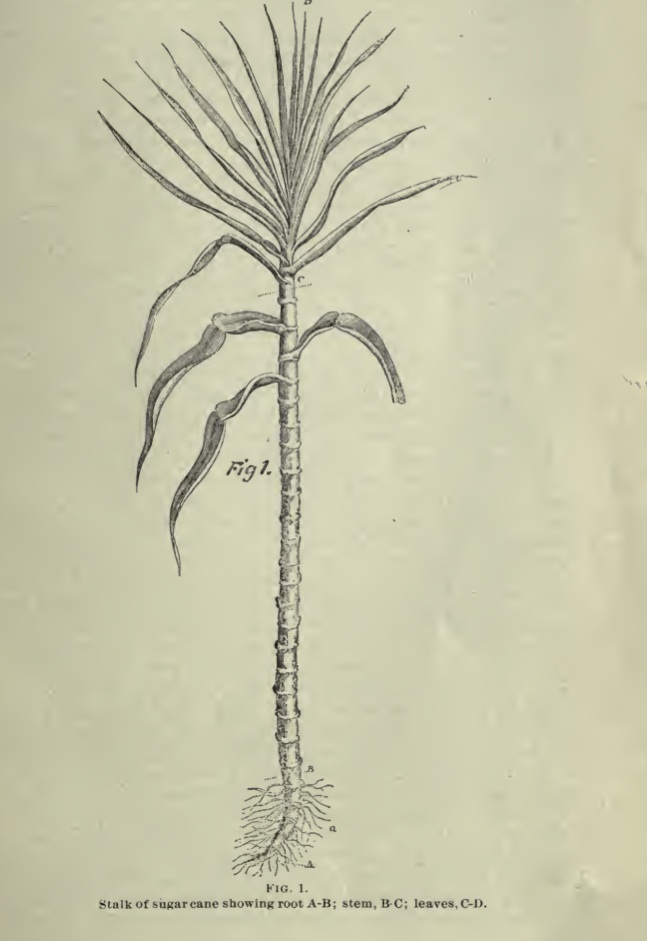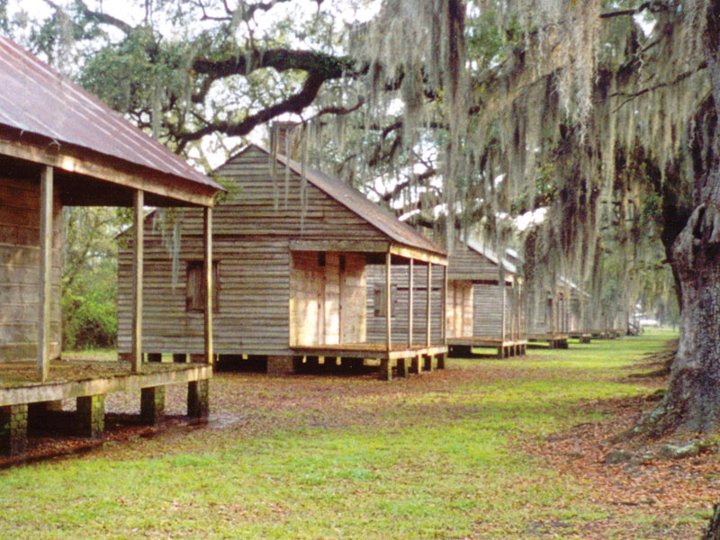About sugar cane: the plant, its history and production
Sugar cane plant history from Plant Cultures website.
“Slavery and Sugar” page from US Slave website.
Sugar–History, cultivation and production. 2008 (updated 2011) by Jeffrey Hays. Facts and Details website.
Working in sugar was especially harsh. Planters organised slaves around a gang system. The toughest work – planting, manuring, and cane-cutting – fell to the strongest and healthiest. Other, less physically demanding tasks were handled by gangs of less robust, younger or older slaves. Even the very young and the old were put to work: driving away birds, cleaning and guarding. From their early years until the onset of old age and infirmity, sugar slaves had to work. Sugar plantations also had factories that converted the harvested sugar cane into raw sugar and then into rum.
Page details from Cultivation of Sugar Cane, in Two Parts by William C. Stubbs, A.M, Ph.D., director of Sugar Experiment Station, Audubon Park, New Orleans, LA. Published 1900.
More reading on Hopeton as a “model” plantation in this 1982 article by James M. Clifton from the Georgia Historical Quarterly (via JSTOR): HopetonModelPlantation
Description of sugar plantation life, from Understanding Slavery site.
 Louisiana’s Evergreen Plantation is “the South’s most intact Plantation complex,” with 37 buildings on the National Register of Historic Places, including 22 slave cabins in original, double row configuration.
Louisiana’s Evergreen Plantation is “the South’s most intact Plantation complex,” with 37 buildings on the National Register of Historic Places, including 22 slave cabins in original, double row configuration.
As a privately owned, operating sugar cane plantation where people continue to live and work, Evergreen Plantation is simply a must-see during your trip to New Orleans Plantation Country.
Laura Plantation is another famous Louisiana sugar plantation, a major tourist attraction today boasting a slave quarters where the Bre’r Rabbit tales were “recorded” in 1840.
Sugar Cane Main, which discusses all things sugar cane farming past and present in southern GA and northern FL. Curated by Bill and Nedra Outlaw as part of their larger Southern Matters website. Includes Farmer’s Bulletins, such as this one YoderPA_1925_Growing_Sugarcane_for_Sirup_besttext and those texts include images and details like the ones below
In 1917, we know 79 acres were planted in sugarcane in Clay County. Acreage increased in the 1930s — could it be a coincidence that it takes a lot of sugar to make moonshine? Today, perhaps twenty acres are under cultivation and at least two family cane grinding events still happen each winter.
From Clay County, FL Historical Archives’ Sugar Cane/Cane Grinding page.


















i am thrilled that the concept of danceaturgy is taking flight at Duke – and so pleased that Dr. Odendahl-James is thus inspired. what a fine and definitive site.